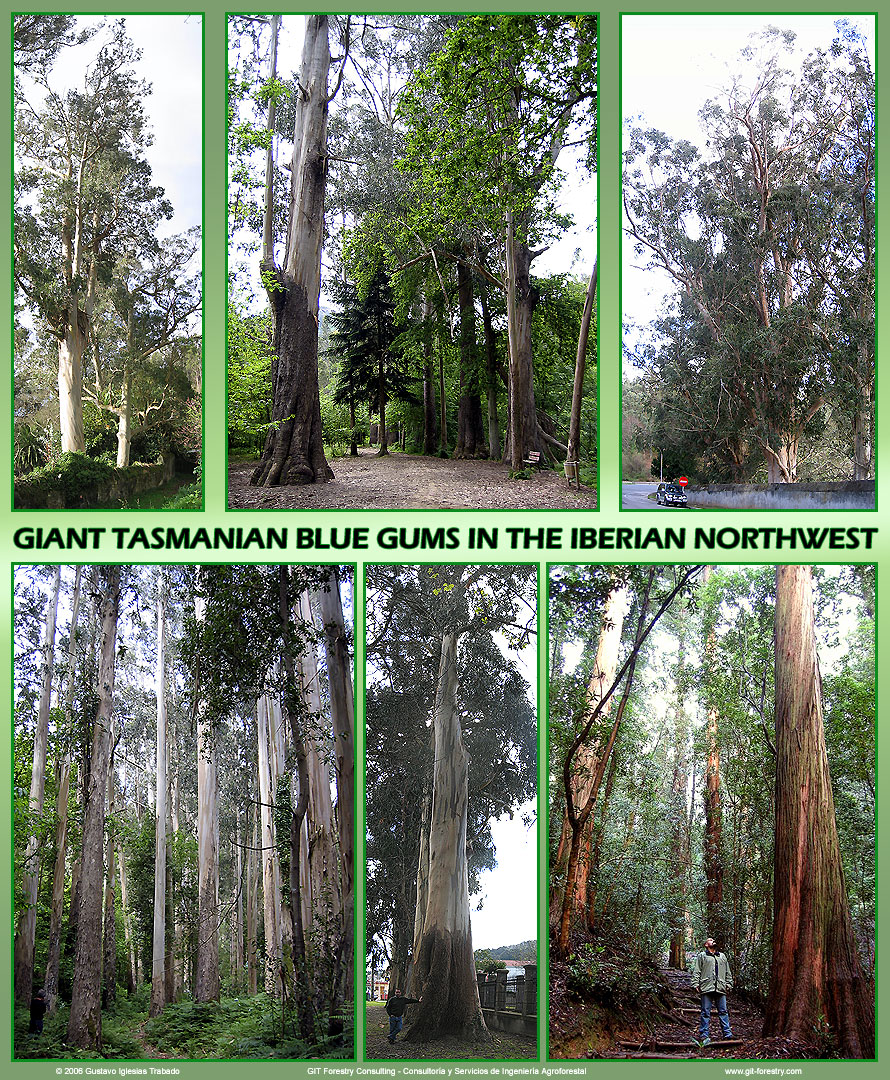 |
||||||
Eucalyptus globulus . The Giant Eucalypts of Northwestern Iberia |
||||||
Eucalipto Blanco. Los Gigantes del Noroeste Ibérico |
||||||
 |
||||||
After being discovered at Recherche Bay (Tasmania) by French naturalist Labillardière in 1792, first Eucalyptus globulus seed batches travelled with Greichenot from Australia to the Botanical Garden of Paris (France) by 1804. Chile received its first seedlings in 1823 and South Africa in 1828. First cultivation records elsewhere in Europe do appear in Portugal by 1829, Italy around 1830 and Spain by 1847. From 1853 ahead Tasmanian Blue Gum seeds were widely distributed around the world from Melbourne by Ferdinand von Müller and from France by Prosper Ramel after his return in 1858 from a plant hunting expedition to Australia. First records of introduction soon appeared in the United States of America, Uruguay, Northern Africa, Argentina and the Northern ranges of the Andes. The original trees introduced in Iberia, which would be today in the range of 140 to 175 years old, are mostly no longer standing. There are a few exceptions where available data suggest plantings of isolated specimens carried on around 1865 and currently surviving their 140th growth season in Spain and carried on by 1852 and currently surviving their 154th growth season in Portugal. The progeny of those still standing and those already gone has however quite surely contributed to the genetic pool of the current landraces of this species in Iberia. First large scale plantings (several dozen thousand seedlings) started in Portugal as early as 1866 and took advantage of the very fast growth rate of these trees to protect bare soil from erosive effects. Later they were also targeted to help control watertables in swampy areas where malaria was an endemic problem or where an excess of seasonal water flooding compromised survival and growth of other commercial tree plantations. These uses contributed to the myth of E. globulus being "a tree of health". Soon they were replicated all over coastal Portugal and Northwestern Spain and similar examples appeared in California and South America. Several hundred gigantic specimens of Tasmanian Blue Gum aged between 110 and 120 years old do survive in a quite healthy status in Northwestern Spain and in many cases they are subject to protection as heritage trees. Some six hundred monumental trees of this species reaching more than 2 meters in diameter at breast height were present two decades ago in Portugal. Two centuries after their arrival one and a half million hectares of these trees (1 to 2 billion specimens!) are present in Europe, especially in Atlantic climates, making the landscape of certain coastal areas strongly ressemble that one of other areas at the opposite side of the world. Helped by the spirit of New Norcia and taking the example of Nova Austrália estate in Abrantes (Portugal), the New Australia of today stretches hugging the Iberian Coast from Hendaye to Gibraltar. |
||||||
BLUE GUM EUCALYPT COASTAL FORESTS :: BLUE GUM EUCALYPT HIGHLAND FORESTS :: OTHER BLUE GUMS IN IBERIA |
||||||
© 2006 Gustavo Iglesias Trabado / GIT Forestry Consulting - Consultoría y Servicios de Ingeniería Agroforestal - EUCALYPTOLOGICS |
||||||